TL;DR
The fastest path to a smart Austin landscape is to pair low‑maintenance hardscaping with native, drought‑ready planting, then visualize the layout in ReimagineHome.ai before you buy. Focus on side‑yard drainage, drip irrigation, practical bed edging, and affordable bulk materials delivery to save time and money.
90% of DIYers say layout and logistics beat planting as the hardest part (Introduction)
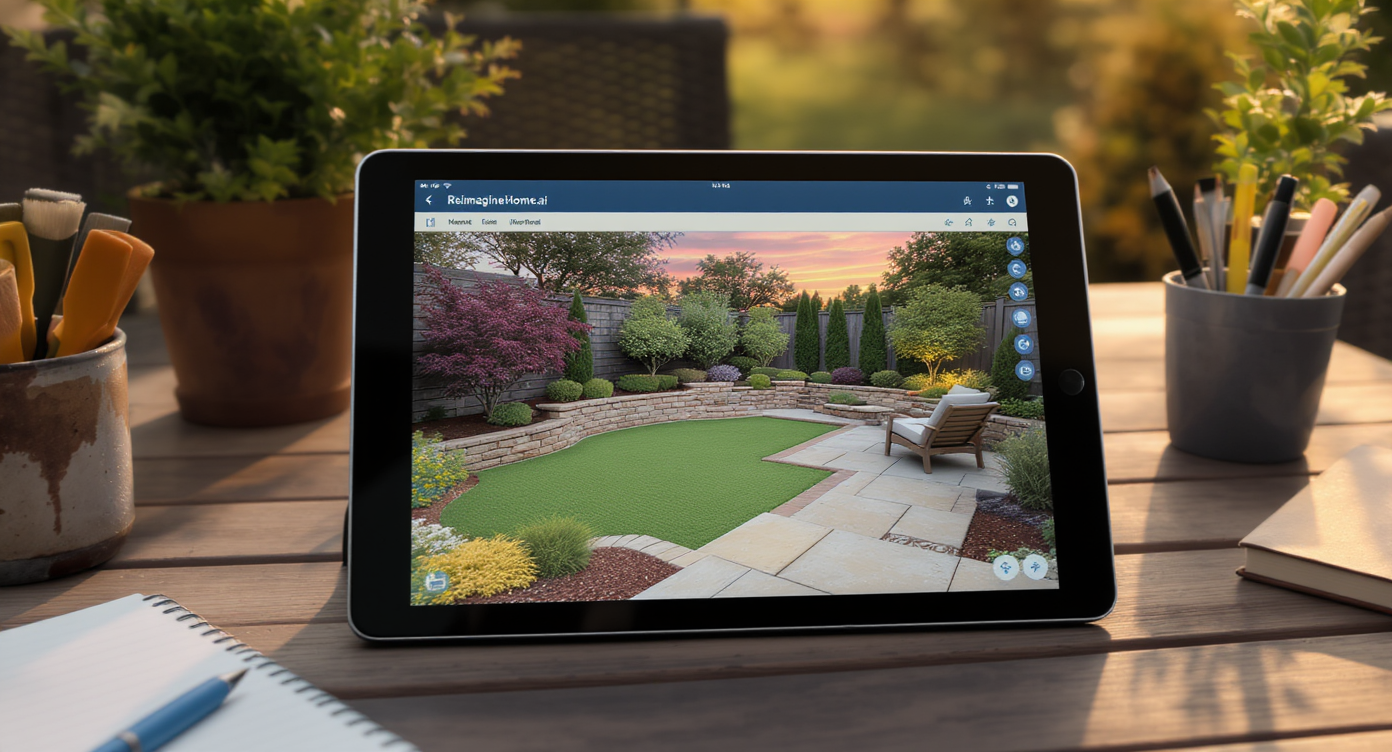
Test and tailor your Central Texas landscape designs instantly with ReimagineHome.ai’s intuitive platform.
Try your own exterior layout instantly on ReimagineHome.ai: https://www.reimaginehome.ai/?utm_source=blog. In Central Texas, modern landscaping ideas balance water‑wise planting with durable hardscaping design—think stone patio, decomposed granite paths, and privacy planting that handles heat and deer. Affordable landscaping ideas begin with a plan: primary garden paths at 36–48 inches, terrace levels that manage slope, and drip irrigation that targets roots, not air. When you can see the garden design in context—materials, shade, grade—you make better decisions and avoid costly rework.
3 forces are reshaping DIY landscaping & hardscaping in Central Texas (Why Landscaping & Hardscaping Are Changing)
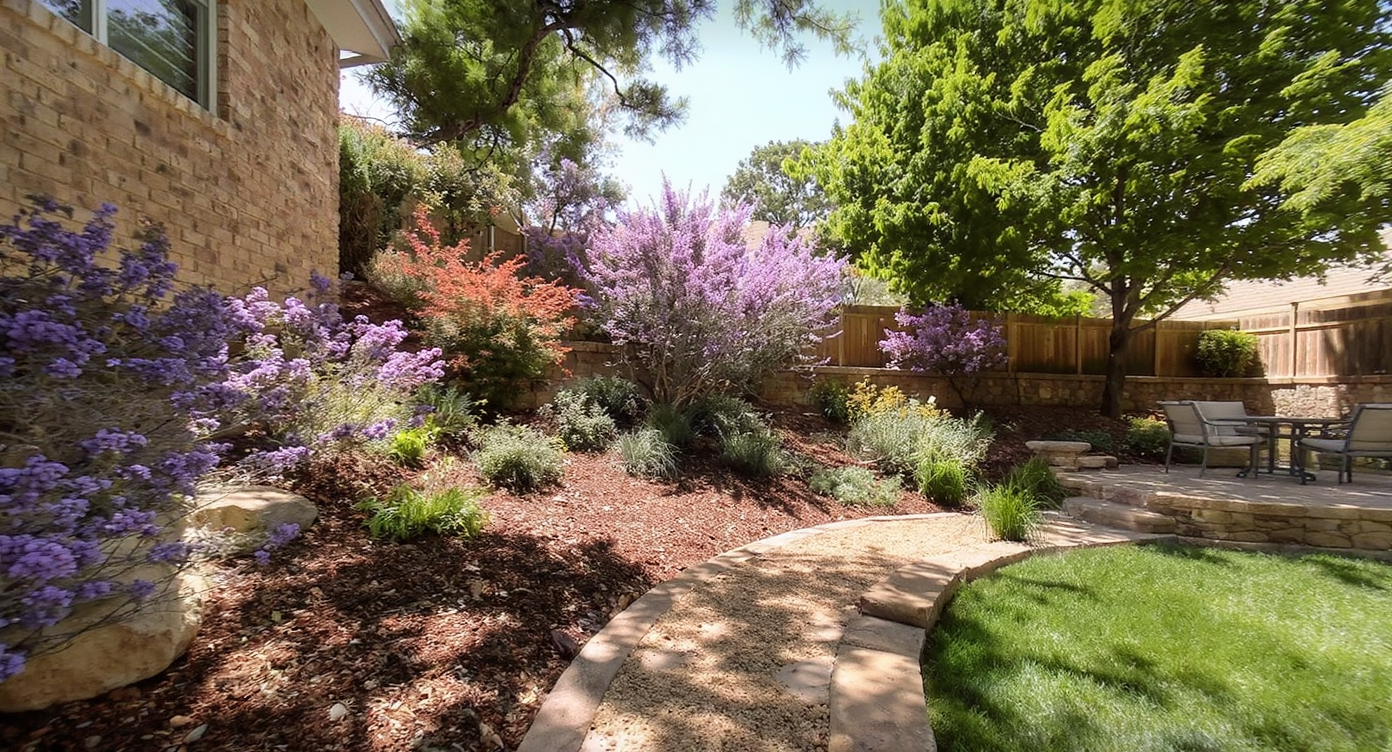
Three key forces drive smarter, water-wise landscaping choices across Central Texas yards today.
Three big drivers explain why front yard design, backyard makeovers, and walkway ideas are changing fast here. - 50–70% of low‑maintenance yard budgets go to hardscaping. Stone, steps, and seating reduce weekly upkeep and water, so homeowners invest in patios, edging, and gravel to lower long‑term costs. - 2 seasonal extremes—summer drought and winter freezes—demand resilient planting. Native shrubs, woody perennials, and mulch are winning over thirsty lawns, especially in shade. - 1 logistical pinch point—moving materials without a truck—shapes projects. Super sacks (1 cubic yard), small‑load delivery, and right‑sized designs beat endless bag runs and high delivery fees.
Anecdote
A homeowner in East Austin turned two muddy side yards—each barely five feet wide—into a cinematic, stone‑lined walkway with river rock swales and turk’s cap backed by coralberry. The narrow space now reads as a designed passage, not a problem zone.
7 trends define today’s curb appeal and outdoor living in Austin (Key Trends)

Seven trends shape Austin’s front yards with practical, stylish, and sustainable design details.
Seven practical trends are shaping curb appeal, small front yard landscaping ideas, and outdoor living across Austin.
36–48 inches is ideal for main paths—wider if two people pass comfortably
Walkway ideas that actually get used start with width. A stone or concrete paver path at 42 inches feels generous without wasting material; set the grade with a 1–2% cross‑slope so water drains, not pools. In shade, crushed gravel over stabilized base grips better than slick flagstone.
1/8‑inch steel edging creates the cleanest curves for beds and DG paths
Making beautiful garden bed edging is tough without the right stock. Use 4‑inch tall steel with stakes every 24–30 inches, or opt for limestone chop set on compacted base for a natural look. Edging is the backbone of garden design—keep lines simple and repeat radiuses.
0.5 GPH emitters on drip lines cut water waste while keeping roots happy
Low‑maintenance hardscaping pairs with drip irrigation kits to make care realistic. Run zones 45–60 minutes, 2–3 times per week in summer; halve in spring/fall and pause before freezes. A simple battery timer and pressure regulator make DIY installs reliable.
1–2 cubic yards cover most DIY beds without requiring a dump truck
Bulk materials don’t have to be overwhelming. For a 4×4 raised bed at 12 inches deep, plan about 0.5 cubic yard; for a 200‑sq‑ft bed at 3 inches of mulch, you’ll need roughly 2 cubic yards. Ask for small‑load delivery or super sacks to avoid 100‑bag car shuttles.
3–5 years is the window for privacy hedges to fill in
Privacy planting takes patience. Stagger native shrubs like wax myrtle or elbow bush in a zigzag to thicken coverage, and underplant with inland sea oats or sedges to knit the ground plane. Outdoor lighting design at 2700–3000 K warms the scene at night without glare.
4–6 hours of sun defines what thrives in side yards and alleys
Shady, muddy side yards need hardscape first, plants second. Combine river rock swales with stepping pads, then add woody perennials—turk’s cap, coralberry, dwarf yaupon—tough enough for pets. Keep pass‑throughs at 36 inches; add handholds on slopes over 5%.
8–10 mesh insect netting protects edibles better than spray cycles
For vegetable beds, pop‑up frames with fine mesh (0.8–1.0 mm) block moths and squash vine borers, making organic growing simpler. Add hooks inside frames for string trellises—cucumbers climb, airflow improves, sprays become optional.
5‑minute workflows to test paths, patios, and planting in ReimagineHome.ai (How to Use ReimagineHome.ai)
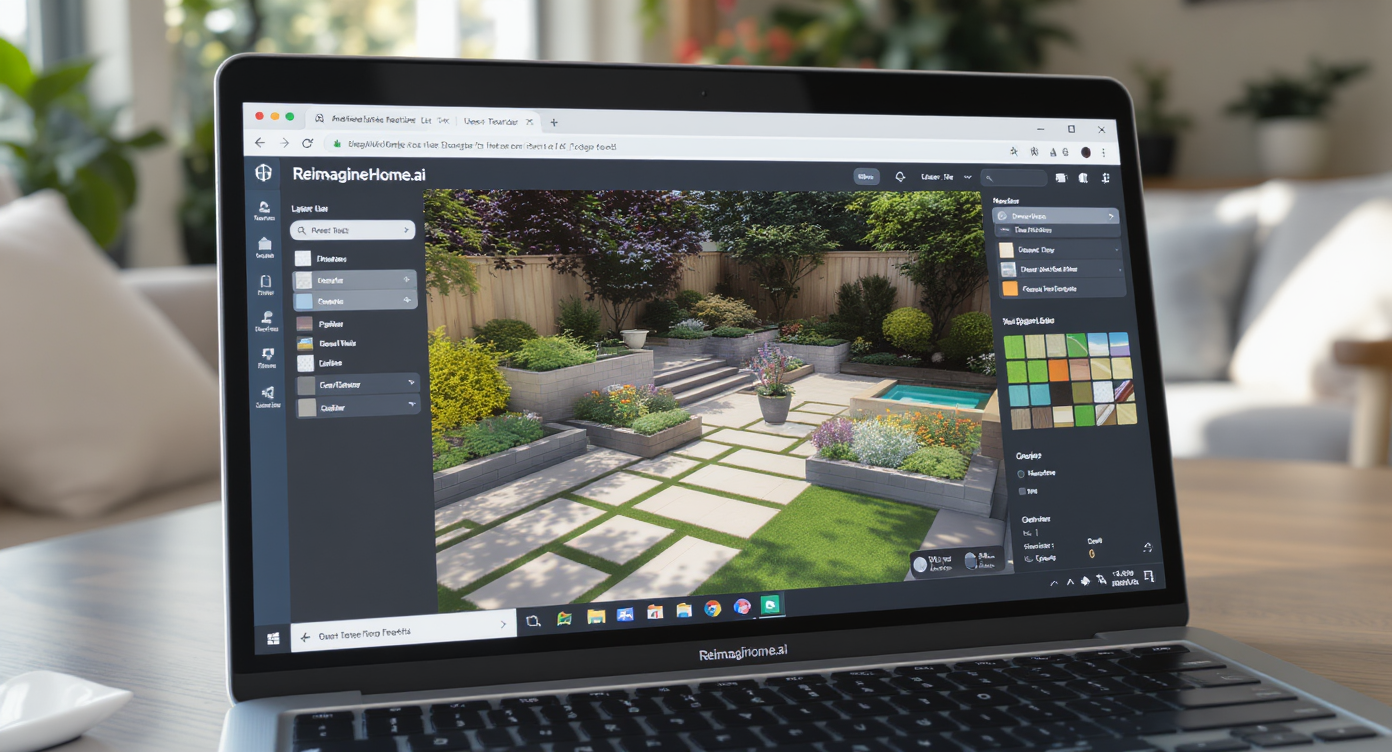
Explore quick, five-minute workflows to test path and patio designs with ReimagineHome.ai’s intuitive tools.
Five quick workflows in ReimagineHome.ai help you test hardscaping design and planting patterns before buying materials.
3 photos are all you need to visualize new paths, patios, and planting
Upload front yard and backyard angles, mark the ground plane, and choose materials—decomposed granite, limestone pavers, or concrete. The platform generates multiple landscaping ideas so you can compare curb appeal instantly.
2 clicks swap edging styles to preview cost and care tradeoffs
Toggle steel edging against limestone or brick soldiers. You’ll see how tighter curves, broader radiuses, and maintenance zones affect the look—and your budget.
5 plant palettes mix native structure with seasonal color
Select deer‑resistant culinary herbs (rosemary, thyme, oregano, sage, chives) with woody perennials and ornamental grasses. ReimagineHome.ai shows spacing, mature size, and shade tolerance so you avoid overcrowding.
1 slider tests terrace levels on sloped lots
Adjust grade to introduce small retaining steps or seat‑walls; the tool previews how 6–8 inch risers and 3–4 foot runs create comfortable steps and better drainage. It’s an easy way to evaluate front yard makeover ideas without moving a shovel.
10 minutes builds a drip‑ready zone map
Lay out beds, note sun hours, and export a simple emitter count. With a plan in hand, you can shop confidently or hand it to an installer. Explore more on materials in our hardscape materials guide: https://www.reimaginehome.ai/blogs/hardscaping-materials-guide?utm_source=blog
4 real‑world fixes for common Austin yard problems (Real-World Stories)

Four practical fixes solve Austin-specific yard challenges with smart, localized landscaping choices.
Four quick micro‑stories illustrate how small choices solve big headaches.
1 narrow side yard at 60 inches wide became a safe, dry passage
An Austin homeowner replaced slick mud with a 24‑inch stepping path flanked by river rock and a drain swale, then planted turk’s cap and dwarf yaupon for durability with dogs. The result: no slips, no weeds, and year‑round access.
2 super sacks (2 cubic yards) finished a 200‑sq‑ft bed in one morning
Instead of 80 mulch bags and a sore back, a small‑load drop plus a wheelbarrow made quick work. Bed edging in 1/8‑inch steel set the line, native perennials filled in, and curb appeal jumped immediately.
6 drip zones tamed a chaotic vegetable garden
Pre‑cut 1/2‑inch tubing, 0.5 GPH emitters, and a $40 timer turned daily hand‑watering into a weekly check. Netting frames (1.0 mm mesh) kept squash borers out, so BT sprays weren’t needed.
1 pollinator plan saved weeks of research
A couple wanted hummingbird and butterfly planting but not a full install. A consult produced a blueprint with light‑based plant lists—salvias, gregg’s mistflower, native grasses—and a sourcing map. They installed over two weekends and stayed on budget. For small‑yard inspiration, see our small front yard landscaping ideas: https://www.reimaginehome.ai/blogs/modern-landscaping-ideas-for-small-front-yards?utm_source=blog
Visualization Scenario
Upload a photo of your front yard to ReimagineHome.ai, drop in a 40‑inch path, preview steel edging versus limestone, and test a 6‑plant native palette with low outdoor lighting. Save the favorite scheme, then export a shopping list and quantity estimates.
6 quick answers to landscaping & hardscaping questions (FAQ)
36–48 inches is the right width for primary walkways—what path size should I use?
Most landscape designers recommend 36–48 inches for main garden paths and 24–30 inches for secondary runs. Wider paths increase accessibility and reduce plant damage from brushing.
2700–3000 K is the sweet spot for LEDs—what outdoor lighting color works best?
Use warm white (2700–3000 K) for steps, seating, and plant uplights to avoid harsh glare and to flatter stone and foliage tones.
2 seasonal windows matter—when should I tackle weeds and pre‑emergent?
Apply pre‑emergent in late winter (late February–March) and early fall (late August–September) before germination. Hand‑pull after rains when roots release cleanly.
1–2 cubic yards solve most projects—how do I buy soil or mulch without a truck?
Ask for small‑load delivery or 1‑yard super sacks, which drop neatly on the driveway. A 4×4 bed at 12 inches deep needs roughly 0.5 cubic yard; a 10×20 bed at 3 inches of mulch needs about 2 cubic yards.
0.5 GPH per emitter is efficient—how do I set up drip irrigation?
Use pressure‑regulated lines, 0.5 GPH emitters spaced to plant needs, and run 45–60 minutes 2–3 times per week in summer, less in spring/fall. Label zones by sun hours.
5–7 herbs resist deer—what edible, low‑water plants actually survive?
Deer‑resistant and drought‑savvy edibles for Austin include rosemary, sage, thyme, oregano, chives, hot peppers, and bay laurel. Protect tender greens with 0.8–1.0 mm mesh.
1 platform to visualize your next backyard makeover before you dig (Visualize Your Home’s Next Chapter)
One platform makes it easy to test patio shapes, steps, seating walls, and planting layouts before you commit. ReimagineHome.ai helps you compare stone patio options for a fire pit, visualize privacy hedges maturing over 3–5 years, and dial in outdoor lighting design at 2700–3000 K—so your outdoor living plan is clear, affordable, and buildable. When you can preview materials and flow, you buy fewer wrong things and finish projects faster. Explore more front yard makeover ideas and lighting tips here: https://www.reimaginehome.ai/blogs/outdoor-lighting-design-tips?utm_source=blog. Then come back to https://www.reimaginehome.ai/?utm_source=blog and visualize your home’s next chapter.
.svg)

.svg)


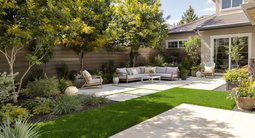
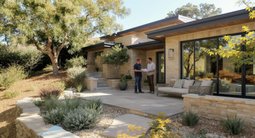


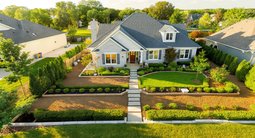
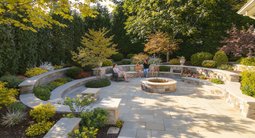


.png)